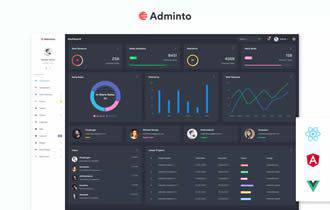Among the many benefits of CSS Grid is its ability to create complex layouts with ease. You don’t need an excessive amount of code. No precarious hacks are required. A few relatively simple lines can help you quickly achieve something that used to take hours.
Of course, CSS Grid is also incredibly powerful. We’ve seen some developers experiment and push the limits of what it can do.
While that’s impressive, the real beauty of this specification is that it helps us accomplish everyday tasks. The common page and feature layouts that make up a typical website project. This is the biggest reason to jump on board and utilize CSS Grid.
We’ve put together a collection of 8 common website layout concepts. Each one demonstrates how CSS Grid can make life easier for web designers. And, if you’re concerned about browser support, some also include fallbacks for Flexbox and other layout techniques. Let’s get started!

2,000+ Templates

270+ Templates

150+ Templates

1,200+ Themes

550+ Plugins

8,200+ Templates
Discovering the “Holy Grail” of Layouts
At first glance, this “Holy Grail” layout may not look too difficult. In fact, we’ve been seeing it for years. The issue has always been that the available CSS layout methods weren’t very effective at setting it up. It has traditionally taken any number of hacks to get it just right. Not so with CSS Grid. CSS-Tricks put together a companion article on the process.
See the Pen Holy Grail Layout with Grid by Chris Coyier
Pick a Card UI
Card layout UIs are kind of a big deal these days. And there are so many different ways to make them unique. This set of examples shows how CSS Grid can take the same HTML markup and create completely different looks.
See the Pen CSS Grid: Card Variations by Olivia Ng
Responsive Multi-column Blog
Here’s an attractive multi-column blog layout that nicely implements whitespace. Each article has its own room to shine. Plus, it adapts to small screens without a hitch. This layout is also easy to expand, with more columns and rows just a few attribute tweaks (grid-template-columns, grid-template-rows) away.
See the Pen Grid-Based Blog Index Page Layout 🌷 by Sheelah Brennan
Product Feature List
This layout is commonly seen in print, but is also a great choice for the web as well. A lovely product image is flanked by feature listings on either side. Each “feature” is a part of a UL element. Where CSS Grid really provides an extra boost is in its responsiveness. On smaller viewports the features are tucked neatly underneath the photo. Go a bit larger (say, a tablet) and the features are pushed over to the right.
See the Pen Center Focus Feature Section // CSS Grid by Brian Haferkamp
Nested Grid Page Layout
Perfect for an online magazine or news-based website, this nested grid layout is quite detailed. And we’re not just talking about its impressive looks. Scroll down and you’ll find a fantastic guide to how the layout was built, along with explanations of the different CSS Grid attributes that are utilized.
See the Pen CSS (SCSS) grid with grid layout and fallback to flexbox by Vincent Humeau
Variable Width Content
Here’s a common wish for designers: keeping text in a narrow column (great for legibility), while allowing other media to expand beyond those restraints. CSS Grid helps take the pain out of this layout by looking for specific HTML tags and setting them free.
See the Pen Article Layout with Varying Content Width Using CSS Grid by Philipp
Pretty Pricing Tables
Multi-column features such as pricing tables are often created with CSS Flexbox. So, why use Grid? For one, adjusting your styles for additional columns is a breeze. It’s a solid way to prepare for ever-changing content needs.
See the Pen Simple CSS Grid Layout Pricing Tables by darkos
Masonry Photo Gallery
Remember when building a masonry grid used to require the assistance of JavaScript? No need for the extra bloat here, as CSS Grid can do the job. This snippet shows you how to create a beautiful and responsive layout. In addition to housing images, it could also work well as a blog index page.
See the Pen CSS Grid Responsive Image Gallery by Stephanie
Create Beautiful Layouts with CSS Grid
CSS Grid was created not only to do extraordinary things – it was also built to easily solve more common layout challenges. For instance, none of the items in our collection is particularly exotic. They are all features you would see on blogs and corporate websites.
However, this specification does make them both easier to build and more flexible to maintain. Its properties allow you to quickly create them and make additions as necessary.
We hope these examples will help you on your journey to implementing CSS Grid into your projects. And, if you’d like to see even more layouts, check out our CodePen collection!
The post 8 Common Website Layouts Built with CSS Grid appeared first on Speckyboy Design Magazine.